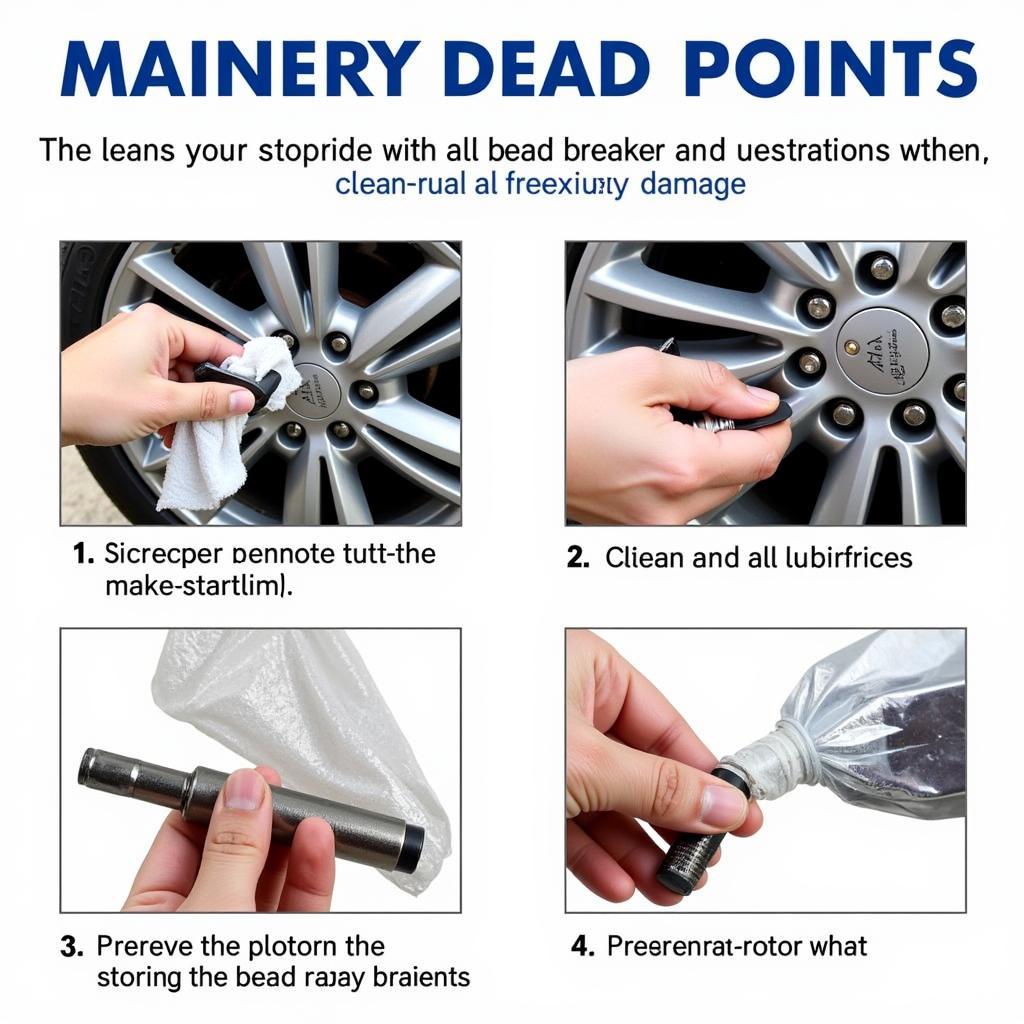A Car Bead Breaker Tool is essential for anyone working on tires, whether a professional mechanic or a DIY enthusiast. This guide dives deep into understanding, selecting, and using this crucial tool, empowering you to tackle tire changes and repairs with confidence. We’ll explore everything from different types of bead breakers to safety tips and common troubleshooting scenarios.
Different Types of Car Bead Breaker Tools: Choosing the Right One for You
Choosing the right car bead breaker tool depends on your specific needs and the frequency of use. Manual bead breakers are portable and affordable, ideal for occasional use. Air-powered bead breakers offer speed and efficiency, perfect for busy shops. Cheetah style bead breakers are known for their power and ease of use, making them a popular choice for professionals. Choosing the best tool for the job ensures efficiency and prevents damage to your tires and rims. What are the different types available? Let’s explore:
Manual Bead Breakers
- Lever Type: These are the most common and budget-friendly option. They use leverage to break the bead, requiring some physical effort.
- Ratchet Type: These offer more mechanical advantage, making the process easier compared to lever types.
Air-Powered Bead Breakers
- Impact Wrench Driven: These are fast and powerful, but require an air compressor.
- Dedicated Air Bead Breakers: These are specifically designed for breaking beads and offer precise control.
Cheetah Style Bead Breakers
These specialized tools are known for their speed and efficiency, making quick work of even the toughest beads.
How to Use a Car Bead Breaker Tool Safely and Effectively
Using a car bead breaker tool correctly is crucial for safety and efficiency. Before you begin, ensure the tire is properly deflated. Position the tool correctly on the tire bead, ensuring it’s not contacting the rim. Apply steady and controlled pressure to break the bead. Remember, patience is key. Rushing the process can lead to damage. For air-powered tools, ensure the air pressure is set correctly. Using the tool incorrectly can cause damage to both the tire and the rim, and even lead to personal injury.
Troubleshooting Common Car Bead Breaker Tool Issues
Sometimes, you might encounter issues while using a car bead breaker tool. The bead might be particularly stubborn, or the tool might not be functioning correctly. Here are some common problems and their solutions:
- Tool slipping: Ensure the tool is positioned correctly and the tire is properly deflated.
- Bead not breaking: Apply more pressure, or try a different type of bead breaker.
- Air leaks (for air-powered tools): Check for leaks in the air lines and connections.
Remember, regular maintenance of your car bead breaker tool can prevent many of these issues. Keep the tool clean and lubricated for optimal performance.
Maintaining Your Car Bead Breaker Tool for Long-Term Performance
 Maintaining Your Car Bead Breaker Tool
Maintaining Your Car Bead Breaker Tool
Just like any other tool, your car bead breaker requires regular maintenance to ensure its longevity and effectiveness. Keep it clean and free of debris, especially after each use. Lubricate moving parts regularly to prevent rust and wear. Store the tool in a dry place to protect it from the elements. Regular maintenance will not only extend the life of your tool but also ensure its safe and efficient operation. Consider inspecting your car tire demount tools regularly.
Conclusion
A car bead breaker tool is an indispensable asset for anyone working with tires. Understanding the different types, knowing how to use them correctly, and maintaining them properly will ensure efficient tire changes and repairs. With the right knowledge and tools, you can confidently tackle any tire-related task. By following the tips and advice in this guide, you’ll be well-equipped to handle any tire changing situation. For a comprehensive set of tools, consider checking out a car tool set with tire unmount.
FAQ
- What is the best type of car bead breaker tool for a beginner? A manual lever-type bead breaker is a good starting point for beginners.
- Do I need an air compressor for all bead breakers? No, only air-powered bead breakers require an air compressor.
- How often should I lubricate my bead breaker tool? Lubricate moving parts after each use, or at least once a month.
- Can I use a car bead breaker tool on motorcycle tires? Yes, but ensure the tool is appropriate for the size and type of tire.
- What should I do if the bead is very difficult to break? Ensure the tire is fully deflated and try using a more powerful bead breaker. You might find a manual car tire changer tool helpful.
- How can I prevent damage to my rims while using a bead breaker? Position the tool correctly on the tire bead, avoiding contact with the rim.
- Where can I find replacement parts for my car bead breaker tool? Contact the manufacturer or check with automotive tool suppliers. You can also explore options for a car tire changer tool.
Common Scenarios
- Scenario 1: You are changing a flat tire on the side of the road. A manual bead breaker is a portable and essential tool in this situation.
- Scenario 2: You own a tire shop and need to change tires quickly and efficiently. An air-powered bead breaker would be the most suitable choice.
- Scenario 3: You are a DIY enthusiast who occasionally works on car tires. A cheetah style bead breaker offers a balance of power and ease of use. Consider exploring car tire repair tools.
Further Exploration
Consider reading our articles on other essential tire changing tools and techniques. We have a comprehensive guide on choosing the right tire pressure gauge and tips for proper tire inflation.
Need assistance? Contact us via WhatsApp: +1(641)206-8880, Email: [email protected] or visit us at 910 Cedar Lane, Chicago, IL 60605, USA. Our customer service team is available 24/7.

Leave a Reply